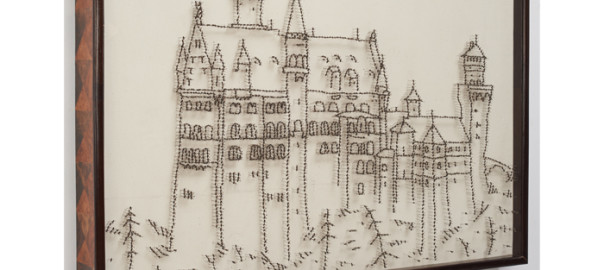TEN HAAF PROJECTS
VOLTA ART FAIR 2015 BOOTH C22
I.
Delighted we take a step closer. Art: carefree and radiant as it draws us in. Ah, linger on, thou art so fair! My obtrusiveness is of the type that demands nothing of you, but a quick flash of your life before your eyes showing your entertainment, which does not cost you anything. Instead, it is life- enhancing. Come and step even closer. Now is where it may get precarious. You should know that not every harmless work of art is as harmless as it may seem. It may in fact belong to a rather perfidious genre. One could even call these the Venus flytraps of art. The works done by Sebastian Weggler pertain to this insidious sort.
II.
At first glance, Weggler’s work appears to be full of wit, variation and an abundance of ideas. This is seen in both it’s content and the material that has been used, which enables the viewers’ curiosity to draw them closer without any inhibitions. The array of media that has been used ranges from oil on canvas, with the utilization of postage stamps as a colour carrier and the application of felt, to video art. In this context, one can speak of a dissimilar consequence. As different as the individual media may appear, their choice is stringent. Based on the seemingly classic oil painting, at least the related implications of it, Sebastian Weggler developed material realms that are connected with mass-production. He transfers them into art and thus into singularity. His work addresses the tension between the industrial manufacture and working by hand. These then touch on the challenges of the industrial revolution. Art is still haunted by this today, without having to push with all vehemence to the fore. It is this approach that gives the work done by Weggler such great quality. The viewer is attracted by the material used and the topics that evoke a degree of familiarity between the viewer and the work itself. It in turn exceeds the realm of art. The combination of the visibly enticing discoveries and simple surfaces of his work silently reveal a deeper level of meaning. The viewer can then probe this of their own accord. Where other artists insist on the arti- stic character or the industrial production of their work, Weggler sub- mitted oscillation, where there are no either nor proposals. He turns everything into art.
III.
The question of what came first, the medium and its possibilities or what is being depicted, has proven to be secondary in the work of Sebastian Weggler. The concept that is persued in the medium is also extended into the area of visual perception. In the history of art, felt is known as being the material used for carpets. When one looks beyond this, its connection to every day life will come to the fore. At an upstream level, this type of presentation marked a sphere of influence for art. This ambivalence continues into the individual work and allows for various associations to be made. It allows for the content level of various themes, with very “manly” connotations, to be recognized. They may be identified with hunting, meat and death and in the first instance, the way in which they are displayed suggests a broad-minded naivety. This enables
the viewer to indulge in its humour. At the same time the work can be understood as a modular construction system. The time and again new com- bination of the individual set pieces creates cohesion and difference. A Weggler is always a Weggler and this should be taken literally. One can simply see this by the inflation of Sebastian Weggler’s Self-Portrait work. This kind of branding is self-promotion taken to the extreme and in its mass it overcomes itself. The artist, who is in the picture multiple times with a scenery that is both mundane and eye-catching, sells himself a carpet. As an artist, he also shows the viewer a carpet. The means in which Weggler’s work echoes the traditional tapestry has led him to being a hero of his own work. This hero is however, one who eats a piece of bread with “Blutwurst” on it. He establishes himself through duplication of his unselfconsciousness seen by his viewers, in that the character of the artist becomes a replacement for those who disappear into themselves.
IV.
The humour intertwined into the work done by Weggler is established on two levels. When describing the first level, a strong defining level of individual work owed to its barefacedness, as being witty, you should also imply it with the mind. The second level, which clearly comes to the surface when the view-point is placed on various works, as well as the shop situation that is presented by Sebastian Weggler. This can then be called humour. Another example is Weggler’s video work. Here he not only touches on video games and thus on the modified, but also the distinctly leisure behaviour of his generation. To a greater degree he ci- tes the cliché of art videos, which is done by a demonstration of the manifestation of their maddening slowness and lack of action. In com- bination with the extreme increase of self-representation, there is an honest and caring critique dispute between the art and the commercialisation structure. They always operate on an equal footing and the reason for the dispute is never ridiculed. Its absurdity leads the viewer to repeatedly see it with subtle humour.
V.
You should therefore not find it troubling if someone recommends get caught in the sticky teeth of a Venus flytrap, as it may very well be a Weggler flytrap. If it is one, you’re bound to instantly recognize the next one you see. You won’t be able to free yourself from the first Weggler and thus are bound to walk with great delight into the next one. A Weggler is after all, a Weggler.
(text: Julia Gerber – translation: Kelly Robinson-Treutler)

